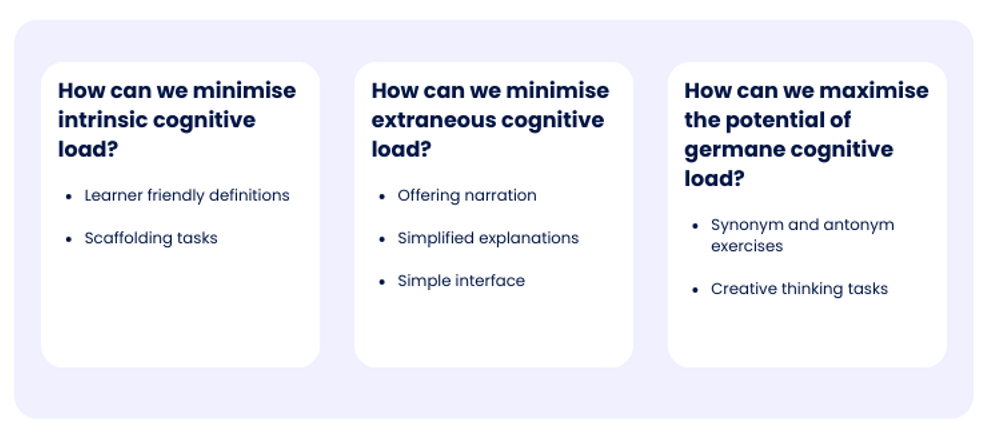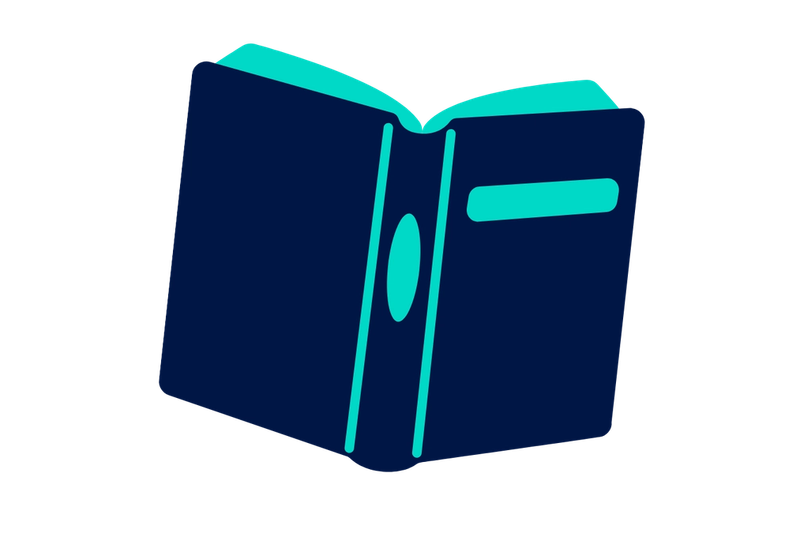In part 1 of this series, I wrote about how Bedrock’s Tier 2 and 3 platforms dovetails with issues around cognitive science. Here, I’ll briefly touch upon the basics of cognitive load theory before considering how we can leverage this in our own classrooms every day, and how Bedrock’s Core Curriculum helps schools tackle a seemingly impossible tier 2 conundrum!
As Willingham observes-
"People are naturally curious, but we are not naturally good thinkers; unless the cognitive conditions are right, we will avoid thinking"
Agreed.
Cognitive load theory gives us a useful way to think about how we can begin to create and understand the conditions that Willingham is referring to. If a person were to lift weights at a gym, increasing or decreasing the difficulty is relatively simple in that we simply adjust the weight. As you might expect, learning is more complex than this- there are more variables when it comes to the difficulty of learning. We have three types of complexity:
- Intrinsic: the complexity of the information or concept itself
- Extraneous: the unnecessary bits of information when we explain something (crowded PowerPoints/convoluted explanations/mis-worded questions)
- Germane: the energy required to place the information into long-term memory
Leveraging Cognitive Load
Teachers need to be empowered with this information: we owe it to our own professional development, and we owe it to our learners. We should always be placing ourselves in our learners’ shoes and reflecting on the inherent difficulty of what we’re asking them to do (intrinsic), whether can can simplify slides or explanations with lean language and concrete examples (extraneous), and whether we can support the assimilation of information by linking to prior learning or using graphic organisers, for example (germane).
This is fundamentally not about creating more resources and adding to workload. It’s about presenting and explaining concepts in leaner ways, using our expertise to cut through the noise for our learners.
Ultimately, we just want our learners to make progress, so it makes complete sense to consider how we can provide the most fruitful platform for it to happen. For subject leaders, thoughts should probably turn to notions of interleaving and spacing, as well as common routines and expectations that one might find in your subject area. For example, in my own faculty, on the macro level, we organised our curriculum into themes, rotating between fiction, non fiction and poetry. Underneath each of these themes; within each of these units, we addressed an overarching question with our key pieces of work. On the micro level, we had what we referred to as the “DNA” of an English lesson, including:
- An answerable driving question on the board (not a learning objective)
- One of the dual coded English skills that we felt were key to success in the subject.
Whilst we cannot lay claim to this being perfect, it was our attempt to minimise cognitive load when approaching the vast array of topics within our subject area. Above all else, the key is to consider your curriculum at these different levels; the focus on curriculum intent and implementation gives us a really clear platform for these kinds of consideration.
The allusiveness of Tier 2
It’s one thing to leverage cognitive load and think about simplifying vocabulary and concepts in our own disciplines, but what about the broader academic terminology that so often trips learners up? These words - particularly in exam situations - can add all kinds of intrinsic and extraneous cognitive loads to what is being asked of pupils.
Consider this from a recent PE exam paper:
Which one of these components of fitness is measured by the Ruler Drop Test [1 mark]
A) Agility
B) Balance
C) Coordination
D) Reaction time
Would a pupil have necessarily been taught ‘component’ by their teacher? They will almost certainly have covered the ‘Ruler Drop Test’ and hopefully the four potential answers. But at what point can a teacher confidently draw the line about a learner’s ability to respond to questions like this? Flick through your own exam papers: there will undoubtedly be similar issues.
At least now we’re cognisant of the fact that pupils need to know a lot of words in order to succeed academically - adding around 3000 per year (Nagy, 1988)- and thanks to Isabel Beck and McKeown, we can at least begin to think about the challenges of vocabulary and concepts that aren’t located to one discipline.
But in some ways, the tier 2 challenge is the most difficult of all; planning a curriculum linked to tier 2 vocabulary is like nailing fog to a wall: you’re pulling in one direction as a subject specialist whilst the generic needs of high utility cross-curricular vocabulary can take a step back given time constraints.
Optimising Germane Load: Where Bedrock comes in
Bedrock’s Core Curriculum gives you a foothold to tackle these seemingly insurmountable challenges for the whole school, featuring thousands of tier 2 words - including those all important ‘command’ words learners so often encounter in exams.
What learners encounter, how they encounter it, and when they encounter it is vital. After a short placement test, learners encounter the words most tailored to them through a range of texts that are specifically designed to enrich and deepen cultural capital: fundamentally, Bedrock is about democratisation of all kinds of knowledge. From the point of view of the learner, Bedrock places them in one of our ten blocks, providing them with narrated, student friendly definitions, simple comprehension questions, synonym/antonym exercises, creative thinking activities and scaffolded writing activities. Not only this, but a single word is encountered on multiple occasions in different ways, reinforcing the concept over a longer period of time. All of this has been created from the ground up with cognitive science and vocabulary instruction in mind:

Not only this, but when they engage with the platform, the deep learning algorithm constantly assesses progress, re-assigning blocks if necessary, guaranteeing personalisation.
But perhaps the most important part of Bedrock is what it gives to the teachers and leaders in a school: real time, data-driven insights into the tier 2 learning in their setting. Our knowledge trends reports operate at learner, class, year and whole school level to give schools complete oversight of the tier 2 learning in their setting. It gives schools a framework to praise and reward amazing tier 2 progress. It gives schools a platform to involve parents and share the journey that their child is on.
Fundamentally, Bedrock is giving schools a way to frame the conversation around vocabulary, and a road map with which to enrich and enliven the language conversations in every setting.
Our grammar curriculum is also designed with cognitive science firmly in mind: we know that grammar is complex, and that many concepts can fall away between Key Stage 2 and Key Stage 4. The principles are the same here: simple, engaging videos to deliver content followed by a range of activities to reinforce the concept. The curriculum is inherently mastery driven: it will not begin to teach a learner about compound sentences until they have understood what an independent clause is. As well as this, a short test gives teachers granular insights about the gaps in individual and class knowledge, again empowering teachers with the highest impact areas to focus on in their classrooms.
The upshot?
We have to be honest here: there’s no such thing as a silver bullet when it comes to literacy and the democratisation of knowledge. Ultimately, schools are the vehicle of change, and we must empower leaders and teachers with the knowledge to support their learners. For an issue as complex and as multifaceted as literacy, we’re confident that Bedrock’s Core Curriculum is an exceptional starting place.
Part 3 will focus on how Mapper links to cognitive science, placing the power of the deep learning algorithm and meaningful activities in the hands of the teachers.





